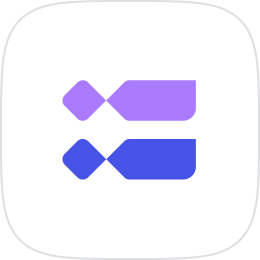Episode Summary
In this episode of Process Unpacked, host Amir Khorram sits down with Todd Birzer, Principal Consultant at Kevolve Product Management and author of The 3 Minute Product Manager. With over 25 years of experience leading and coaching product teams, Todd shares his deep insights into Product-Led Growth (PLG) and how it’s transforming the B2B SaaS landscape.
Todd breaks down the fundamentals of PLG, exploring why it’s become a disruptive force in industries traditionally dominated by sales-led strategies. He highlights the importance of understanding customer behavior through both qualitative and quantitative data, as well as the critical role onboarding plays in guiding users to value quickly. Drawing from real-world examples, Todd illustrates how companies like DocuSign and HubSpot have successfully adopted PLG to scale faster and stay competitive.
The conversation also delves into challenges such as cross-functional alignment and prioritizing PLG initiatives. Todd offers actionable advice for product managers navigating these transitions and preparing for the future of PLG.
Guest-at-a-Glance
Name: Todd Birzer
What he does: Principal Consultant
Company: Kevolve Product Management
Noteworthy: 25+ years helping product teams align strategy with execution.
Watch the Full Videoloading...
loading...
Key Insights
The Role of Onboarding in Product-Led Growth Success
Todd Birzer emphasizes the critical role of onboarding in Product-Led Growth (PLG). He explains that effective onboarding gets users to their "aha moment" quickly, creating a seamless path to value. Using DocuSign as an example, Todd outlines how a streamlined three-step onboarding process—account creation, signature adoption, and document submission—ensures users achieve their goals without unnecessary barriers. By delaying additional steps like branding or personalization until after the value is delivered, companies can improve user satisfaction and engagement. Todd highlights that cluttered onboarding workflows can hinder success, underscoring the importance of investment in this area. Great onboarding design isn't just about reducing friction; it's about enabling long-term product adoption and customer retention.
Why Cross-Functional Alignment Is Essential for PLG
Todd Birzer explains that cross-functional alignment is the backbone of a successful PLG strategy. For PLG to thrive, teams across marketing, product, engineering, customer success, and sales must operate as a cohesive unit. Todd stresses the dangers of siloed thinking, where individual teams optimize for their own goals rather than collective success. For example, marketing teams measured only on sign-ups may drive unqualified leads, ultimately harming customer retention and revenue. He advocates for team metrics, such as activated sign-ups, that focus on shared objectives. By fostering collaboration and breaking down silos, organizations can create a unified approach that drives customer value and scales efficiently.
Balancing Agility and Structure in PLG Teams
Todd Birzer discusses the delicate balance between agility and structure in PLG initiatives. He highlights the need to set clear expectations, establish growth teams that span silos, and define team metrics to create a solid foundation. At the same time, teams must maintain flexibility to experiment, iterate, and adapt to customer needs. Using Guru as an example, Todd explains how focusing on specific metrics, like two-week activation rates, allows teams to measure progress while staying agile in their approach. This balance enables companies to innovate rapidly without losing sight of strategic goals, ensuring long-term success in the competitive SaaS landscape.
The Importance of Customer Insights in PLG Success
Todd Birzer underscores the critical role of deep customer understanding in driving Product-Led Growth (PLG). He explains that successful PLG strategies rely on a combination of qualitative and quantitative insights. Qualitative methods, like customer interviews, reveal needs and pain points, while quantitative data, often derived from product analytics, highlights user behavior and trends. Todd emphasizes that teams must integrate these two perspectives to uncover actionable insights. He warns against over-reliance on one approach, noting that excessive focus on analytics can lead to missed opportunities for innovation, while neglecting data can make decisions less informed. By blending qualitative empathy with quantitative precision, product teams can create experiences that resonate with users and drive sustained growth. Todd highlights this dual approach as a cornerstone of effective PLG strategies, helping businesses continuously align their offerings with customer expectations.
Episode Highlights
Shifting from Sales-Led to Product-Led Growth
Timestamp: [00:13:00]
Todd Birzer discusses the challenges and opportunities businesses face when transitioning from a sales-led to a product-led growth (PLG) strategy. He explains that PLG allows companies to scale faster by automating customer acquisition and focusing on delivering value through the product itself. Todd highlights examples of companies that successfully adapted, such as HubSpot, which started with a small, dedicated team to minimize risks while learning and iterating. He emphasizes that transitioning requires re-architecting the go-to-market model, which can lead to short-term revenue impacts but yields long-term scalability.
"If you're a sales-led growth company transitioning to PLG, it’s a major shift. HubSpot focused on a smaller product first, empowering a dedicated team to experiment, learn, and minimize risk during the transition."
How Metrics Drive Success in PLG
Timestamp: [00:21:00]
Metrics are foundational to the success of any PLG initiative. Todd identifies five key team metrics: activated sign-ups, engagement scores, activation rates, product-qualified leads, and usage retention. He emphasizes that these metrics must reflect team goals rather than individual silos to ensure alignment and progress. Using Guru as an example, Todd explains how its North Star metric—two-week activation rates—helps the company track user success and improve outcomes. However, he notes that setting up and acting on these metrics can be challenging due to technical limitations, such as integrating product analytics with CRM systems.
"Metrics like activation rates and product-qualified leads help align teams and measure success. But many companies struggle with the technical challenges of integrating analytics and CRM systems for actionable insights."
The Role of Automation in Scaling PLG
Timestamp: [00:29:00]
Automation is a critical driver of efficiency and scalability in PLG, according to Todd Birzer. He explains that automation enables companies to manage customer acquisition and engagement at scale without a proportional increase in resources. By creating playbooks based on product triggers, teams can automate actions such as in-app upsell messages or human outreach by customer success teams. Todd gives an example of triggering engagement based on specific thresholds, such as activation rates or engagement scores. He underscores that automation must be tightly coordinated across teams to maximize its impact.
"Automation allows PLG companies to scale efficiently by triggering actions like in-app upsell messages or customer success outreach based on product usage data. These playbooks ensure consistency and effective resource allocation."
Challenges for Enterprises Embracing PLG
Timestamp: [00:33:00]
Todd explains why enterprises transitioning to PLG face unique challenges compared to startups. Larger organizations often grapple with legacy processes, cultural inertia, and revenue risks tied to introducing free trials or freemium models. Todd notes that enterprises must also rethink sales commission structures and prioritize resources for onboarding, which is often an afterthought in sales-led companies. He emphasizes the importance of aligning all teams to this new model, particularly in industries where competitors are adopting PLG and reshaping market dynamics.
"Enterprises face hurdles like revenue drops when moving to freemium models. They must also revamp onboarding, which is often underdeveloped in sales-led companies, to fully embrace the PLG mindset."
Top Quotes
- [00:04:00] Todd Birzer: "Product management is one of the world’s best jobs. When done right, we can delight customers, push back competitors, and set up products for long-term success. It’s all about creating lasting impact."
- [00:12:00] Todd Birzer: "Product-led growth is a disruptive force. It empowers new entrants to deliver instant value, often outpacing legacy competitors stuck in sales-led models. It’s not just a strategy; it’s a game-changer for the market."
- [00:18:00] Todd Birzer: "For PLG to work, we need marketing, product, engineering, customer success, and sales all working as one system. Silos won’t cut it. Success depends on breaking down barriers and focusing on shared outcomes."
- [00:22:00] Todd Birzer: "Metrics like activated sign-ups and product-qualified leads align teams toward shared goals. These aren’t vanity metrics; they reflect real user success and help drive scalable growth across the business."
- [00:33:00] Todd Birzer: "Enterprises transitioning to PLG face tough challenges—revenue risks, cultural resistance, and the need to overhaul onboarding. But staying static isn’t an option when competitors are rapidly embracing this model."
- [00:29:00] Todd Birzer: "Automation in PLG is a game-changer. Playbooks triggered by product analytics ensure timely actions—whether it’s a customer success outreach or an in-app upsell message. It’s how PLG companies scale effectively without adding unnecessary resources."






